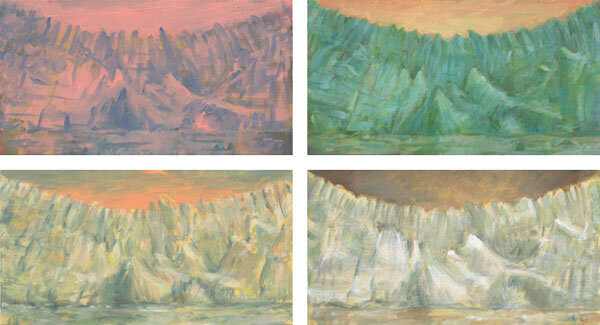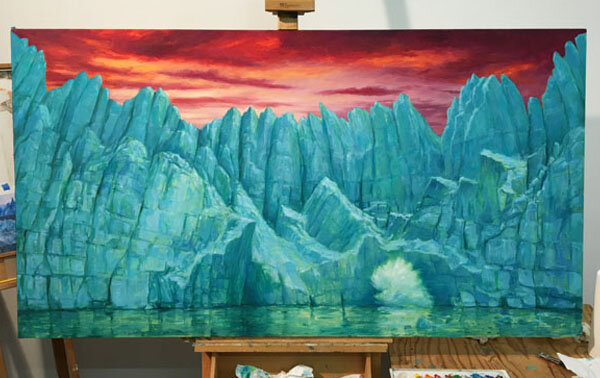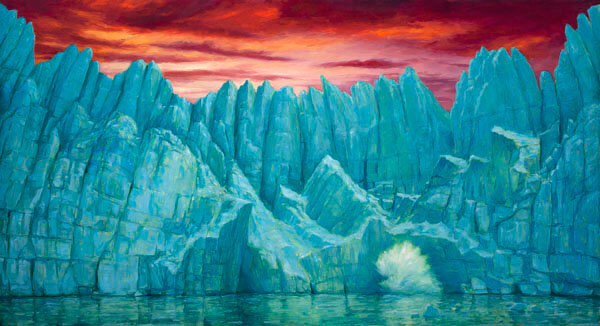The process of creating art requires sincere focus from the artist. It’s a constant dance of adding and subtracting. The painter, for example, must be attentive to what a painting needs, or what to take out. Of course, poor choices can ruin a painting, just as spending too much effort overworking an image can extinguish its vitality. The artist mustn’t be inhibited by these risks, however. It simply requires a willingness to fail. By remaining in tune with the creative process, art can blossom into what it is meant to become.
I recently had an idea to paint a massive glacier as it met the sea. Frozen within this wall of ice would be things like cargo ships, jet planes, and trucks. These man-made objects would symbolize the fundamental role of humans in contributing to climate change. And they would be emerging from the thawing ice, like a villain stepping onto a stage.
I made some preliminary studies to figure out my composition. This made me realize that, if I wanted to convey the immense size of a glacier, I would need to make the various ships and planes appear quite small, or my painting would need to be extremely large. I questioned whether I could successfully pull off my idea.
I also made a few small color studies to evaluate different color options for my painting. I envisioned the glacier as a swooping arc of ice that loomed over and engulfed the viewer. I believed this would make a striking composition.
I initially imagined my scene as dark and moody. I envisioned it as having a strange light emanating from within the glacier, revealing shadowy forms of ships and planes trapped in the ice. However the golden yellow color of my under-painting caused me to rethink this direction. I liked how the warm yellow complemented the teal blue of my glacier. It dawned on me that, if I made the sky feel warm and tropical, I could allude to a radically changing climate without the need to include any vehicles in the ice.
My first attempt at a salmon pink sky didn’t feel right. The colors seemed too muted for the level of drama I wanted, so I changed the sky into an intense vermilion sunset. I also changed the glacier’s profile as it seemed too uniformly even. A more ragged edge looked better.
I loved how vibrant the painting had become. The colors looked almost electric. Yet the painting still needed something. I finally decided the glacier was too evenly lit. Therefore I added some additional highlights and shadows to vary the tonal values and translucence of the ice.
I call the painting Introductions. The title could allude to the icebergs calving into the water, or the uncharacteristic sky above. Both of these hint at a warming planet.
As with a lot of my paintings, this one evolved significantly over the course of its creation. I abandoned ideas and course-corrected a number of times. I learned long ago that staying responsive to a painting can lead to interesting results. Ideally they produce a stronger piece of art. If the artist can remain flexible, their art will always surprise and delight them.





